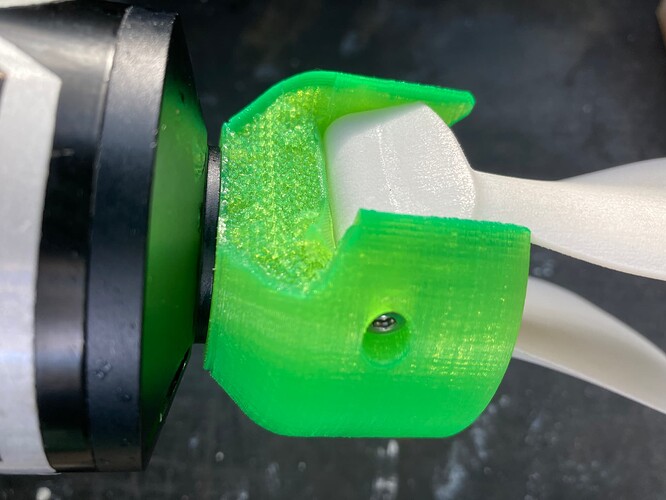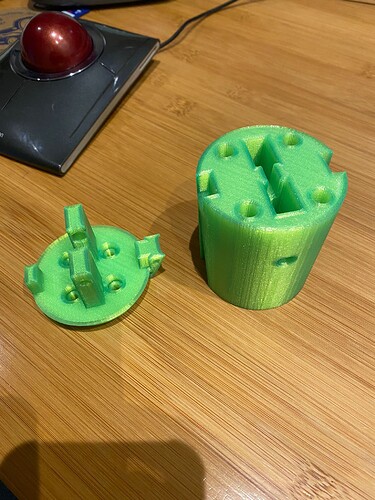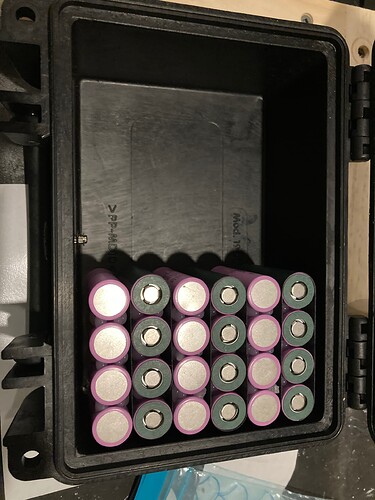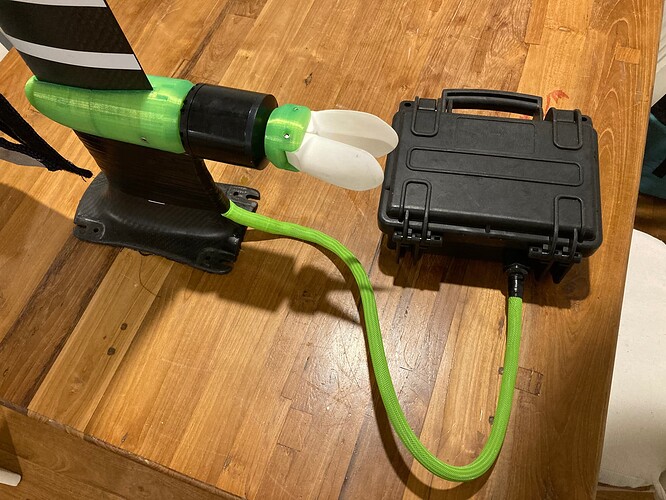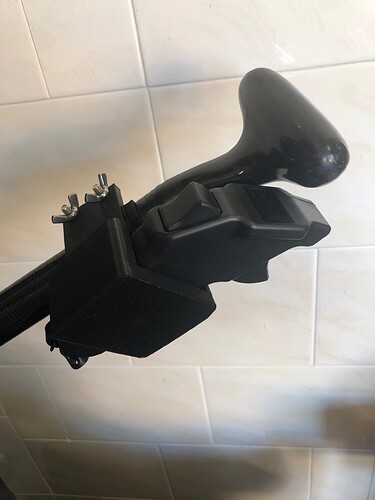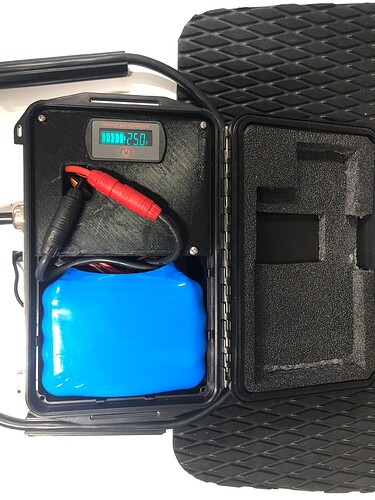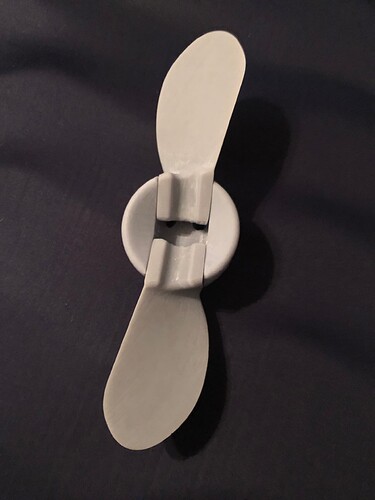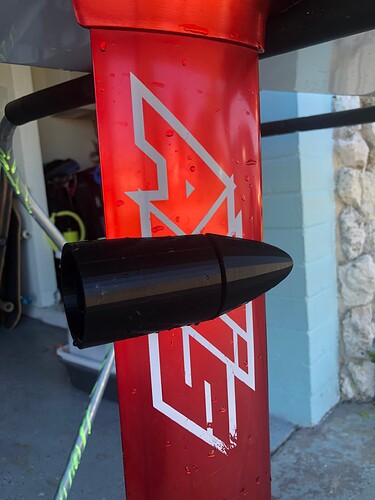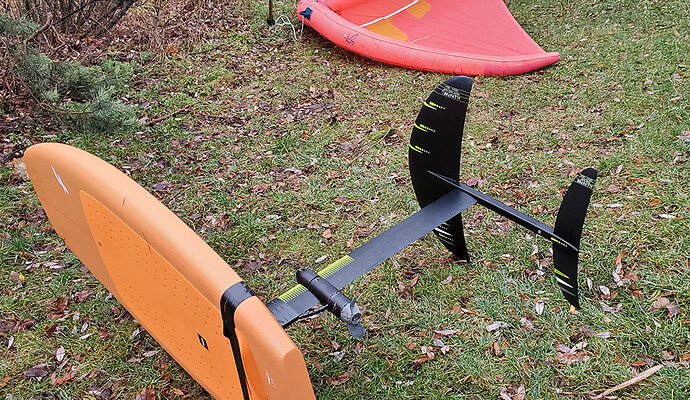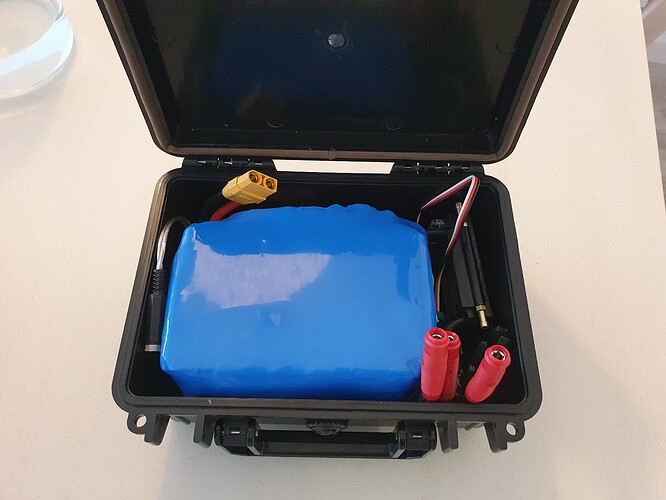Quick update on the Water testing. DIY system Is working great so far. Plenty of power to get foiling downwind and amazing in waves. The PETG printed prop mount failed on the sixth session. I could see it was starting to stress crack. Version2 prop mount now ready to go. I will eventually send parts off to be SLS nylon printed I think. More mods to the motor plug to anchor the motor wires and give more torsional strength. Enjoying the constant design evolution and efoil revolution.
Any idea which ESC FoilDrive is using? It`s passive cooling and looks like having no problem with 120A or more?
I weighed my motor and battery box kit.
Everything totals 4kg exactly, the box I have is about 700grams. I like the box, seems very robust and has a convenient carry handle. Available colours in orange, green and black.
My ESC is the Turnigy Marine ESC 150A.
Out of stock on HobbyKing global currently!
Here is a pic of my case with 24 18650 cells inside.
I have the same box!
but I went for 24 MolicelP42A since there’s enough room.
I am still finishing mine, but I noticed that the box is not really waterproof: at least in the one that i got, if you submerge it you’ll notice that water comes inside, so I’ll be replacing the gasket with a ticker one.
Looks awesome mate. Obviously it’s taken a heap of time and learning, but that’s part of the fun. At $2k (AUD) less than buying a Foildrive, would you do it all again?
I’ve been tossing up buying a Foildrive or DIY’ing, so I’m also looking forward to a parts list when you’re ready to share.
My box is holding up so far and staying dry (touch wood). I am putting tie-down straps over the top to fix it to the board. I think this adds a bit more compression onto the seals. Another downwinder today in light 15knots. So far so good. I’m starting to leave the motor on my mast more and more!
Which folding prop design do you use? Do you know the pitch and the diameter?
then your seals are probably better than mine. In my box the lid is almost touching the box when it’s closed, so it’s not possible to compress it more.
btw, yesterday i changed the original seals with a window seal that is thicker and now water does not get inside. It’s a really nice box for the price
My advice to anyone is don’t demo a foil drive unless you are willing to part with $3.8k or build one yourself! If you are a SUP foiler or getting in to downwind paddling then they are a great tool to have. They should only ever be used well away from other surf water users. The last thing I want is a fleet of these at my local lineup! It opens up spots currently never surfed by any water craft in my local area.
Some Pros and Cons
FoilDrive (Official)
- Works out of the box
- Customer Support and spare parts
- Aussie made
- light weight, compact
- maytech remote with a sticker on it
- needs washing after every use
DIY
- If it breaks, you can hopefully fix it yourself
- endlessly searching websites for suitable parts
- waiting for parts from China
- getting a parcel every day for a month.
- need a 3D printer
- maytech remote without a sticker on it
- still needs washing after use - aluminium, copper, saltwater and electricity are not a great mix.
- building a suitable battery - spot welder required
- guessing what will work - kV, prop diameter etc
- satisfaction when it does work!
Foildrive have changed my view on efoils and hats off to them. With this kind of system you have the benefits of a little boost, but it still feels like traditional foiling. It is targeted towards real foilers and people who just want more stoke when on the water with limited time. I’d like to see a DIY targeted kit that could be self assembled. Maybe foildrive v2 will have more custom parts now that the initial uptake has been very positive.
Do you know if Foildrive have bothered coating the magnets etc? Or have they just thrown the motors on and hoped for the best?
I wouldn’t hold my breath. There are certain elements that result in a healthy profit from a complete kit (batteries etc). You lose this if you just supply basic parts.
I’d be interested to know what the max speed for the foildrive is in the water (I should also google it as I’m sure its somewhere)…
So still going through the testing phase, but working great so far.
Happy with the electronics, I’ve shortened my cable length. Still have plenty coiled up in the box incase I want it longer for a different board.
New stronger 3D PETG prop hub seems to be holding up. Who else is doing a DIY build with any success?
Been working on my setup for the past few weeks. I have water tested but have yet to take it out in the surf. Running a 6384 120kv outrunner with a 100 amp Flycolor esc and maytech remote. Recently resin printed a prop to see how well it lasts compared to PLA and PETG.
Here’s my setup:
Odrive motor 6374 150 kv
ESC FlyColor 150A
Li -Po 6s 10000 mAh
Maytech RC
First I tried Gong Allvator L with no luck, then I replaced it with VELOCE PRO CLEAR L and wow, I can fly!
Getting closer with my build. 6S4P P42A.
Box with all the components is 2.5Kg, plus 1Kg of motor
Battery and motor ready, I only have to print the motor mount and i’m ready to go.
question, why is that noone is using a dead man switch or anything with the foildrive, be it DIY or the australian commercial one ? It’s just as simple as a magnet with a reed switch
Hi, very interesting too read about all the different setups. I’m also about building up a foil drive and I’m almost gathering all the parts together. But at the moment I’m struggling with the battery balancing / BMS. Do you use an BMS only for charging and bypasses it while riding (recharging) or is the BMS always in place. Do you have a good tip which BMS is good or some links where I can get more information? Many thanks in advance! Winterly greetings from the Baltic sea.
I don’t have a BMS on my battery.
Instead, I use an external digital balance charger for charging up my 6S battery. I’ve set my ESC to the highest 3.4V protection. Today on 5km Downwind run I came back with 85% power. I only needed a short motor burst for about 8 paddle ups in Total.
Following thougt regarding the prop design:
For our kind of e-assistence (only get on foil) we need props with a higer pitch (then e-foiler).
Because we only move in „slow“ water. When we’re getting faster (then a low pitch becomes better) we turn of our engines 
actually it’s the other way round. If your velocity is low, then you need lower pitch to ensure the airfoils are working at the right AoA and avoid stalling the prop. See How to Calculate a Boat's Propeller Pitch & Why It Matters
Quick question, are people using an “anti-spark” device in their builds?
Also, a battery like this should work just fine right?
Scott
Using an xt-90s connector for the battery is a simple solution that will prevent sparking.

